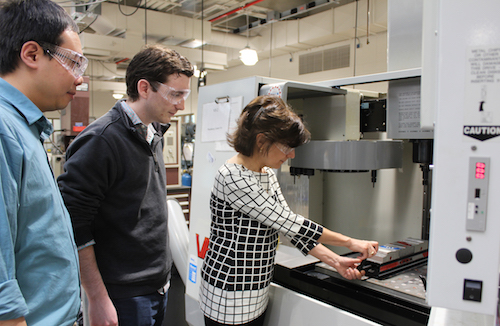Product lifecycle management (PLM) was intended to boost knowledge sharing and collaboration across product design teams and manufacturing, but over the years, the monolithic platform has fallen short of expectations and found a home mostly as a vehicle for facilitating engineering data and processes.
A team of researchers at Penn State University (PSU), in conjunction with researchers from industry and other universities, is teaming up to go a step further by developing an advanced framework that will allow engineers to share engineering data as well as leverage design and manufacturing-related knowledge throughout the entire product lifecycle. The 18-month effort, which just received $1.2 million in funding from the Digital Manufacturing and Design Innovation Institute (DMDII), is being pursued by PSU in addition to Rolls Royce, Georgia Tech, Boeing, John Deere and Sentient Science.
 PSU is developing an advanced framework for automating sharing of engineering and manufacturing-related knowledge throughout the product lifecycle. Image Courtesy of Penn State University
PSU is developing an advanced framework for automating sharing of engineering and manufacturing-related knowledge throughout the product lifecycle. Image Courtesy of Penn State UniversityExisting tools and methods that support product design have a limited capacity to support automated knowledge sharing and for representing engineering knowledge, says Dazhong Wu, Ph.D, with the Harold and Inge Marcus Department of Industrial and Manufacturing Engineering at Penn State. Because they fall short of representing and automating knowledge sharing, manufacturers are not able to adequately reuse domain knowledge and thus achieve higher operating efficiencies, he explained.
“The objective of the project is to develop an advanced system framework that enables various models at different levels of production to be integrated within an OEM’s product lifecycle feedback loop,” Wu says.
To facilitate this process, the Penn State team, including graduate student Connor Jennings, is working on design and manufacturing ontologies intended to formally define the structure of data and how components can relate to one another. The—goal is to allow experts to more easily share domain expertise on both product designs and manufacturing processes. There is also a decision support tool being developed as a result of this partnership, and the combination should help manufacturers and their supply chains foster more informed and timely decision making through each stage of the product lifecycle, the researchers said.
For example, using the new framework, manufacturers should be able to better predict engineering failures of products along with reducing costs and machine down time by sharing cross-functional knowledge across the different domains. “If we are successful, we will be able to offer manufacturers a general framework that spans from the highest levels to the levels of the product lifecycle,” explains Janis Terpenny, Penn State’s Peter & Angela Dal Pezzo chair and department head of the Harold & Inge Marcus Department of Industrial & Manufacturing Engineering.
The DMDII, launched in 2014, is a collaboration between the U.S. Department of Defense and other partners with the goal of transforming American manufacturing by focusing on the supply chain.
About the Author
Follow Robotics 24/7 on Linkedin
Article topics
Email Sign Up
















